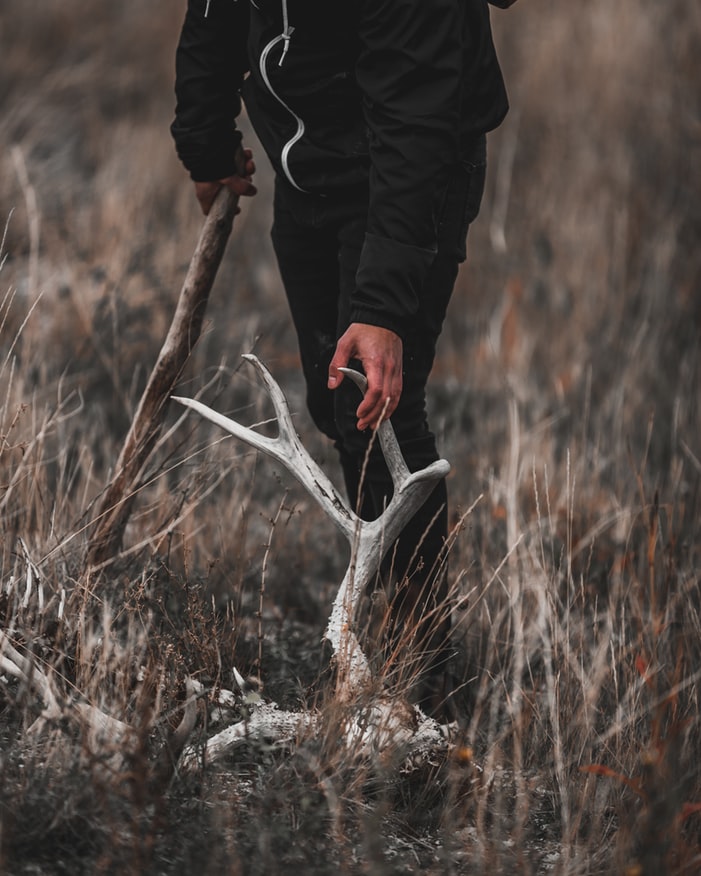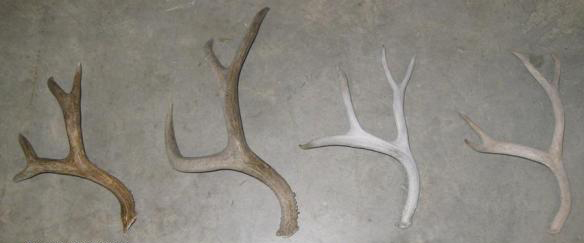Bucks for Bone: The Current Monetary Value of Shed Antlers
Well, we’re well into March now, and since February, antlers have been dropping in the fields and woodlots of North America. Though shed hunting has been happening since the dawn of time, it’s gained popularity in recent years. For some, shed hunting is as regular a part of the year as the actual hunting season. Every late winter and early spring, hunters hit the woods in search of racks of antlers – hopefully before they get chewed on by the likes of squirrels.
Why Shed Hunt in the First Place?
Why not? They’re unique and interesting. Shed antlers are commonly found on mantles, lamps, and tool handles, just to name a few places. Heck, piles of them by the barn even look neat. To many, they’re nostalgic pieces of history.
Deer hunters can also obtain valuable information about animal behavior by finding shed antlers on their hunting grounds. This intel helps to determine the bucks that made the season, how these bucks use the property, and ultimately help hunters to devise strategies for next season. For this reason, shed hunting is often part of an annual scouting regimen.
Some people shed hunt for cold, hard cash. Though I can never seem to part with any of my old bone, I can certainly see the attraction. After all, there is a healthy market for them, as collectors and artisans use them to create any number of products. Their creative, decorative, and utilitarian uses are vast.
What's an Antler Worth?
So, what are antlers worth? First off, the market for them is variable, and their value depends on their grade and condition. Here is a run-down of estimated prices for 2020 from Antler Buyers.
Grade A: These are antlers in perfect condition. They’ve yet to fade and are brown. Also, they have no chew marks or damaged tines. Antlers in this class likely dropped in the previous several weeks.
Grade B: Still having a natural brown color, this class of antler is considered to be in good condition. They will usually have some combination of slight fading, weathering, and tine damage.
Grade C: Grade C antlers are typically weathered, faded, and almost bleached looking. They had likely dropped two or more years ago.
If you’re interested in finding buyers in your area, visit Antlerbuyers. Values are estimated as follows:
Whitetail Grade A: $10-$12 per pound*
Whitetail Grade B: $5-$6 per pound*
Whitetail Grade C: $1-2 per pound*
Mule Deer Grade A: $12 per pound*
Mule Grade B: $5-$6 per pound*
Mule Grade C: $1-$2 per pound*
Elk Grade A: $12-$14 per pound*
Elk Grade B: $9-$10 per pound*
Elk Grade C: $2-$3 per pound*
*Note that these prices are estimates based on averages from random antler buyers every three months.
Whether your compulsion is to seek mammoth antler sheds from giant bucks and bulls or to accrue piles of them, there is an opportunity to pad your wallet or even offset some of the cost of the new rifle or bow you covet. Maybe I’ll decide to cash in some of mine one day, but I doubt it. Nonetheless, it’s good to know the approximate value associated with these precious finds.
Based in Texas, Jerald Kopp is President of 1st Light Hunting Journal. His articles cover a variety of topics about hunting and the outdoor lifestyle. Jerald is an avid outdoorsman with deer hunting and whitetails being by far his greatest passion. He was introduced to hunting and fishing at an early age and has been enjoying it for 40+ years. In 2005, he established the Empowerment Outfitter Network (EON) – a faith-based non-profit organization that provides hunting opportunities for disabled and terminally-ill children and youth. When not hunting, he spends his time traveling and enjoying life with Amy, his wife of over 30 years. Jerald and Amy have two adult daughters and a son-in-law.





